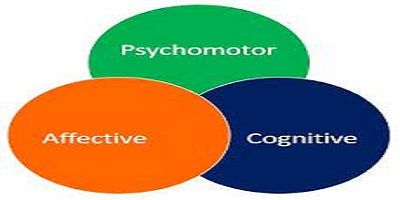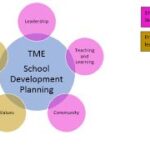Learning may be in the form of an increase in knowledge, development in skills, or change in attitude of an individual. It implies that knowledge, skills, and attitude are the major categories of learning. These categories are known as learning domains in educational settings. Educational experts also call them major goals of learning because after participation in an activity or going through an experience an individual either develops knowledge or skill or does have some change in attitude.
BLOOM’S TAXONOMY
Since Bloom identified and introduced the three categories of learning, it is known as “Bloom’s Taxonomy which comprises cognitive, affective, and psychomotor domains. They are often described as head, hand, and heart where the head represents knowledge. The hand is related to manual skills and the heart indicates attitude.
This Taxonomy was first published in 1956 under the leadership of Dr. Benjamin S. Bloom who chaired a committee of educational psychologists. Bloom was an American academic and educational expert. He along with his colleagues worked on the cognitive domain in the initial stage. Work on the other two domains was initiated later on.
COGNITIVE DOMAIN
The cognitive domain is related to the development of mental abilities and thinking skills. This domain has the following six categories:
- Knowledge
- Understanding
- Application
- Analysis
- Synthesis
- Evaluation
REVISED COGNITIVE DOMAIN
Lorin Anderson, a student of Bloom, revisited the levels of the cognitive domain in the mid-nineties and made two major changes in the domain
1. He changed the nouns into action verbs
2. He re-arranged the last two levels
The revised taxonomy was published in 2001which is in use today. The levels in the new and revised domain are as follows:
Remembering
The lowest level related to recalling, telling, describing, gathering information or getting new knowledge about something, etc
Understanding
Being able to relate the new knowledge to the previous knowledge
Applying
Using the newly gained knowledge in practical life, changing theory into practice
Analyzing
Looking into aspects from different perspectives
Evaluating
Solving problems
Creating
Articulating different aspects to create knowledge
AFFECTIVE DOMAIN
It is related to feelings and emotions. It refers to the development of values and attitudes. Experts who worked on it are Bloom, Krathwohl, and Masia, 1973. The levels of this domain are:
Receiving:
Getting information, active listening, awareness and exposure to a concept or an activity, etc.
Responding:
Active participation as a result of active listening or awareness
Valuing:
Prioritizing concepts or information
Organization:
Coordinating various priorities according to the relevant situation
Characterization:
Meaningful and consistent demonstration of values, norms, or learned concepts in practice
PSYCHOMOTOR DOMAIN
It refers to motor skills and physical movements. However, experts say that it also covers social and operational skills along with mere manual tasks.
The psychomotor domain has been categorized and introduced in three versions each initiated by different experts given as under:
VERSION 1
The first version was given by Simpson (1972) with the following levels:
Perception
Using of senses to guide motor activities. For example, determining the quantity of heat, taste of food, etc
Set
Physical, mental, and emotional readiness to perform a task
Guided Response
Attempting a task with trial and error
Mechanism
Basic proficiency in performance with few errors
Complex overt response
Expert proficiency and errors are minimal in this stage
Adaptation
Adapting performance according to the situation
Organization
Effective and proficient performance; Ability to create new physical movements for a particular situation
VERSION 2
This version was devised by Harrow (1972) and presents the following levels:
Reflex Movements
Involuntary reaction/response to stimulus
Fundamental Movements
Basic movements like walking, grasping, etc
Perceptual Movements
Voluntary response to a stimulus
Physical abilities
More skilled physical performance
Skilled Movements
Advance movements with minimum or no errors.
Non-discursive Movements
Effective body language like facial expressions, and gestures according to the situation.
Version 3
This version was given by Davie’s in 1972. He presents the following levels:
Imitation
Following someone/ copying actions etc
Manipulation
Performing action after getting instructions, reading or listening, etc
Precision
More accurate intermediate-level actions
Articulation
Coordination of certain skills to fit into different situations
Naturalization
Natural performance which is full of confidence and accuracy




